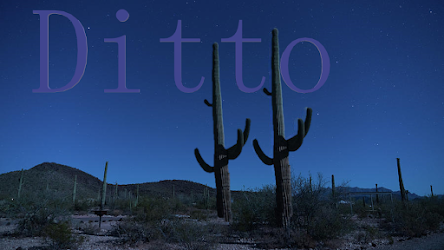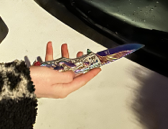.
.
Nothing Going On
The quote is Andrei Tarkovsky, who among other things made a movie in the 70s that had a long train-riding sequence of passing landscape, the backs of people's heads, and nothing going on, in sepia - and it was good.
In film school there’s an idea that a marked difference in movie-making occurred when people starting making movies like this. Someone inclined to say about them, it’s just nothing going on, might’ve preferred the theoretically previous kind of movie: which star movement. Granted that there is something going on, what it is, in the Tarkovsky case, would be more like the kind of thing a movie is made from than the kind of things movies can depict. These other movies might be said to have made time-keeping the star.
Like if someone were to think to themselves, the train to the Zone was five whole minutes longggg, they would be using the sequence to tell time, like it was a clock. If they thought it was zoom crash bam look out aiiiiiiieeee and Buster Keaton almost died on it, it would be like it had moved. And these two modes correspond to different periods of film history, goes the theory.
Horror movies may have long clock-watching-esque shots of nothing going on. But the shots will often instead star - with dreadful anticipation - movement. There's a Thing and it's out There, waiting some Place. It may be that to get such dread involves a wandering mind like with Tarkovsky's shot. But in a Horror movie our boredom doesn't have to get farther than the image on the poster to reach the Zone. To understand the long empty Horror shot we would be better off considering the techniques in movies that star movement.
.
.
It's Out There
The opening sequence of It Follows very clearly spells out for us that There's A Horrible Thing Out There Some Place.
It goes:
1. Shot that is long and wide and moving and that will give us a clear view of the whole street from both angles, a view which includes one house with something bad in it that a girl comes running away from - a shot that in effect contains within it a couple of other shots - such as a shot of the girl in the street reacting to something - which, because it is a reaction, suggest to us another shot (like in our heads) of the thing being reacted to. So that's four shots in one. Time is money and mounting a camera onto a crane is expensive.
2. Shot of desperately speeding away
3. Shot that is from far away: of the girl and her abandoned car in the middle of nowhere.
4. Shot that is of the girl but closer. Note the light over the water far away behind her.
5. Shot of what the girl is looking towards: her car, far away.
6, Shot of the girl dead by morning.
That the Thing is horrible and Out There is understood; the question is, how's it going to get to her? From the road, like she thinks, defensively illuminated by her car's interior lights? From the water like I'm convinced of, trying to outmaneuver the inevitably scary failure of the road-approach defense? Shot 4 is especially dreadful. I imagine someone striding out of the dark, up the hidden side of the beach dune, from where the girl thinks she safe from having to watch. The sequence makes emptiness dreadful with excessive information about distances.
.
.
Finally: A Toy
Here's a Horror:
Dittos are aliens that can assume the appearance of any inanimate object nearby. They can do it nigh undetectably, in the blink of an eye. Because of this, they often hunt in plain sight of their human prey, hiding as a duplicate across open terrain, office spaces, gas stations, waiting for the target to turn to get closer. Dittos in their true liquid form are incredibly fast and capable of squeezing through slivers of space.
R -
A 9 (liquid) 0 (solid)
T 6
P 2
A -
C -
K 6
Special Abilities
Dispersed Form
The Ditto can only be hurt by weapons or tactics that move large parts of its body away from the main mass or by area effects. Firearms are useless, though explosives can work.
Asphyxiation
The Ditto can swallow a creature, depriving it of air, causing Standard Damage each round until the victim is freed.
Regenerating Metabolism
Any time the Ditto throws the Sun it gains a point of Toughness.
Acidic
Touching a Ditto causes Standard Damage at 8 Intensity
Mimic
Dittos can assume the form of any inanimate thing - but they dont change their mass so: their copies are nearly always lighter or heavier than the original thing. One Ditto weighs about 250 pounds. It is rumored in UFO conspiracy circles that certain buildings are in fact an enormous mass of mimicking Dittos, waiting for something…
Weaknesses
Use of weak bases (alkaline compounds) like ammonia can neutralize or drown acidic Dittos, causing Standard Damage each round. Defeating Dittos can be an opportunity for clever uses of real-world chemistry by PCs.
Once PC notice there's two of something that there was one of a second ago - they'll probably try to light it up. They get a flat 50 chance to guess right. Otherwise the Ditto will evade and liquify and slip between the cracks of something. PCs may try to identify Dittos by making note of how close suspicious objects are to them in the room. As Host, you can make any empty space suddenly seem suspicious by noting in your description what inanimate objects are closest to the PC and how many of that kind of thing there are. Or tell them that there's one less chair at the table than a minute ago.








